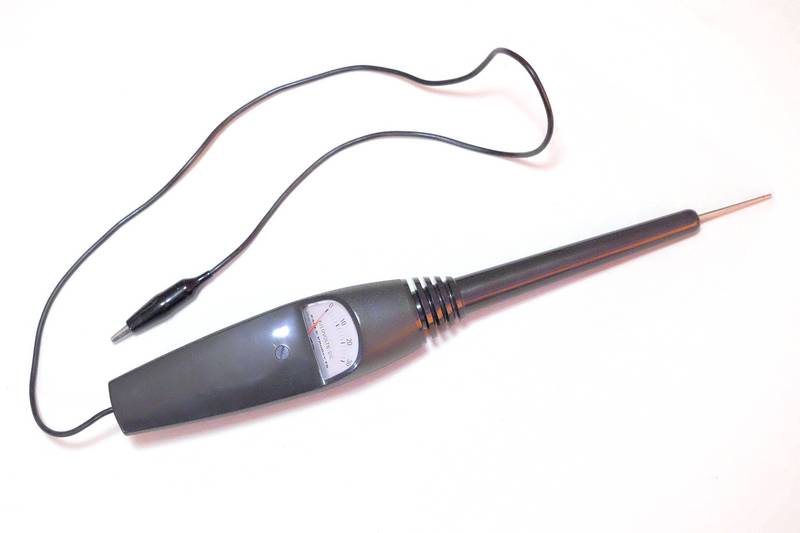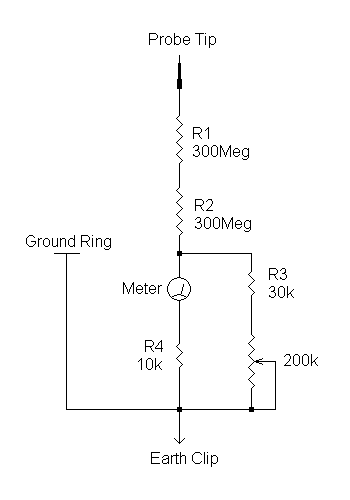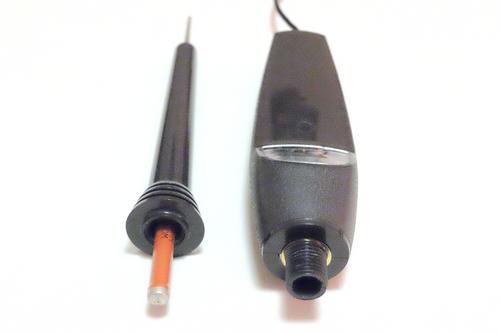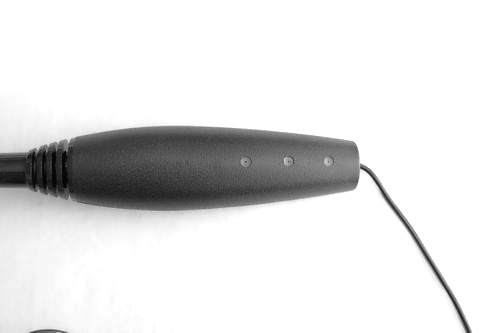
The KHP-30 is a high voltage probe with a built in meter, measuring up to 30 kV DC. It is meant primarily for testing the anode voltage on CRTs.
The box indicates this was made in Japan, and based on some of the materials used in the probe I would say it dates from the 1970s. This example is branded 'Eagle Products', but I have seen otherwise identical looking probes with different brand names online.
Input Impedance 600 Meg Current Draw 50 uA at 30 kV

All resistors have 5% tolerance. The adjustable leg with R3 and the preset resistor takes about 10% of the current and can be adjusted to compensate for the tolerances of the resistors and the meter movement.
My meter movement was full scale at 43uA and measured 3,200 ohms. The preset resistor was set for a resistance of about 57k. For details of the "ground ring" see the constructional information and photographs below.
I reckon the probe is built to withstand continous operation, a full scale reading would only dissipate 1.5W, however with my example after 5 minutes or so measuring 22kV the reading slowly rises about 5 percent, as the large resistors do warm up a little. The reading returns to normal after giving it a few minutes to cool.

The probe neck unscrews from the body. Inside the neck are a pair of high voltage resistors and a spring to maintain contact. The brass coloured washer that sits around the threads on the body is connected to ground and serves to prevent the voltage gradient across the outside of the probe neck from continuing over the body where you hold it!
The ground ring must be removed to further open the probe (it can simply be lifted off, it is not soldered).
On the back of the body are three holes fitted with plastic bungs. The outer two holes house the screws holding the body together. The middle hole gives access to the preset resistor for calibration. The bungs can be removed by gently levering them out using a pair of tweezers in the small hole through the middle of the bung.

The contact on the end of the green wire pokes through the case and makes contact with the ground ring/washer mentioned earlier.